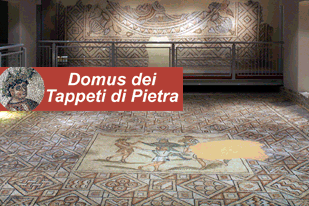Mosaic Art methods and techniques in Ravenna, Italy .


MOSAIC ART METHODS AND TECHNIQUES in Ravenna. Hotels near mosaic Ravenna.
Image:1/2) a mosaicist at work in her own laboratory.
Ravenna has a great tradition in the art of the mosaic. Therefore we offer our Clients the description of the techniques and the methods used by the mosaic artists of Ravenna.
In the meantime we introduce the ideal hotels to enjoy the mosaic of Ravenna in his more various expressions: the Byzantine mosaics, the ancient and medieval mosaics, the modern and contemporary mosaics, the present mosaic’s techniques and mosaic’s schools; the more comfortable hotels with the best value for money near the Ravenna mosaics and close to the mosaic’s schools.
DIRECT METHOD in Ravenna, Italy .
This is the most ancient (known) mosaic art method.
It consists in the direct application of mosaic pieces on fresh mortar.
The mortar, which is traditionally composed of a binding agent (calcium hydroxide), lime putty and aggregate materials (sand, marble and baked ceramic powder) that is substituted for "impure" mortars (calcium hydroxide and cement) or of complex adhesive substances (pre-selected cement) ready to use just be adding water or specific solutions.
These mosaic pieces, that are all painstakingly hand cut using a hammer and chisel, are of irregular shape, mostly in the form of squared polygons and made from natural stone such as : marble, pebbles or of artificial materials, enamelled materials, vitrified, gilt or silver pastes.
The direct method is still the best as the mosaic maker has direct control on the light effects, by altering the inclination angle of the mosaic pieces.
THE RAVENNA SCHOOL: DIRECT METHOD ON PROVISIONAL MORTAR
This method was perfected in Ravenna in the early 1950’s thanks to Ravenna mosaic makers, and namely Prof. Renato Signorini.
The creation of such methodology was the most important technical contribution made by the Ravenna school to the enhancement of the mosaic making art, and for which it is still renowned today.
It was first developed in response to the need to make corrections during the application stage (to meet the needs of the painters that supplied the cardboard for the mosaic applications), it soon became an excellent educational instrument for the teaching of the mosaic art.
It consists in the preparation of a layer of raw mortar on which the drawing (reticule) is applied by the positioning of a sheet of tissue paper on which the drawing is impressed using water soluble ink (rota-printing).
It is then possible to directly apply the mosaic pieces following the guidelines of the drawing.
Once the mosaic is complete, the next stage of that of the "tear" (through the application of two layer of cloth on the surface of the mosaic pieces) and the subsequent application of the definitive binding agent.
INDIRECT OR VENETIAN METHOD
In the late 1800’s Giandomenico Facchina, a mosaic artist of Friuli perfected the so-called "overturned" technique, that is undertaken on paper support.
This method was already familiar to and used by several Venetian mosaic makers amongst which Giovanni Moro, who proclaimed himself as the inventor of the method and used it at the San Marco in Venice in the period between 1822 and 1828.
The method involves the preparation of a drawing on a paper or cloth backing, to which the mosaic pieces are glued: the mosaic prepared in this way is then directly applied to the mortar in situ applied to the surface to be decorated, after which the paper or cloth backing is eliminated.
This procedure is much faster than the direct method and therefore more economic, although the surface effect is always flat and smooth, thereby failing to achieve some of the special effects of the mosaic such as light refraction and the subtle play on inclinations which is possible to achieve with direct application techniques.
The pleasure of fine accommodation in the centre of Ravenna: we recommend the Fabbri hotels for a pleasant stay as follows:
The Centrale Byron hotel, 3-star hotel in the centre of Ravenna, near mosaic;
The Bisanzio, 4-star hotel in the centre of Ravenna, near mosaic;
Once you have reached the hotel and parked your car, forget it and walk everywhere, because everything is within walking distance.
The railway station is near our hotels and within walking distance.
© reserved copyright





